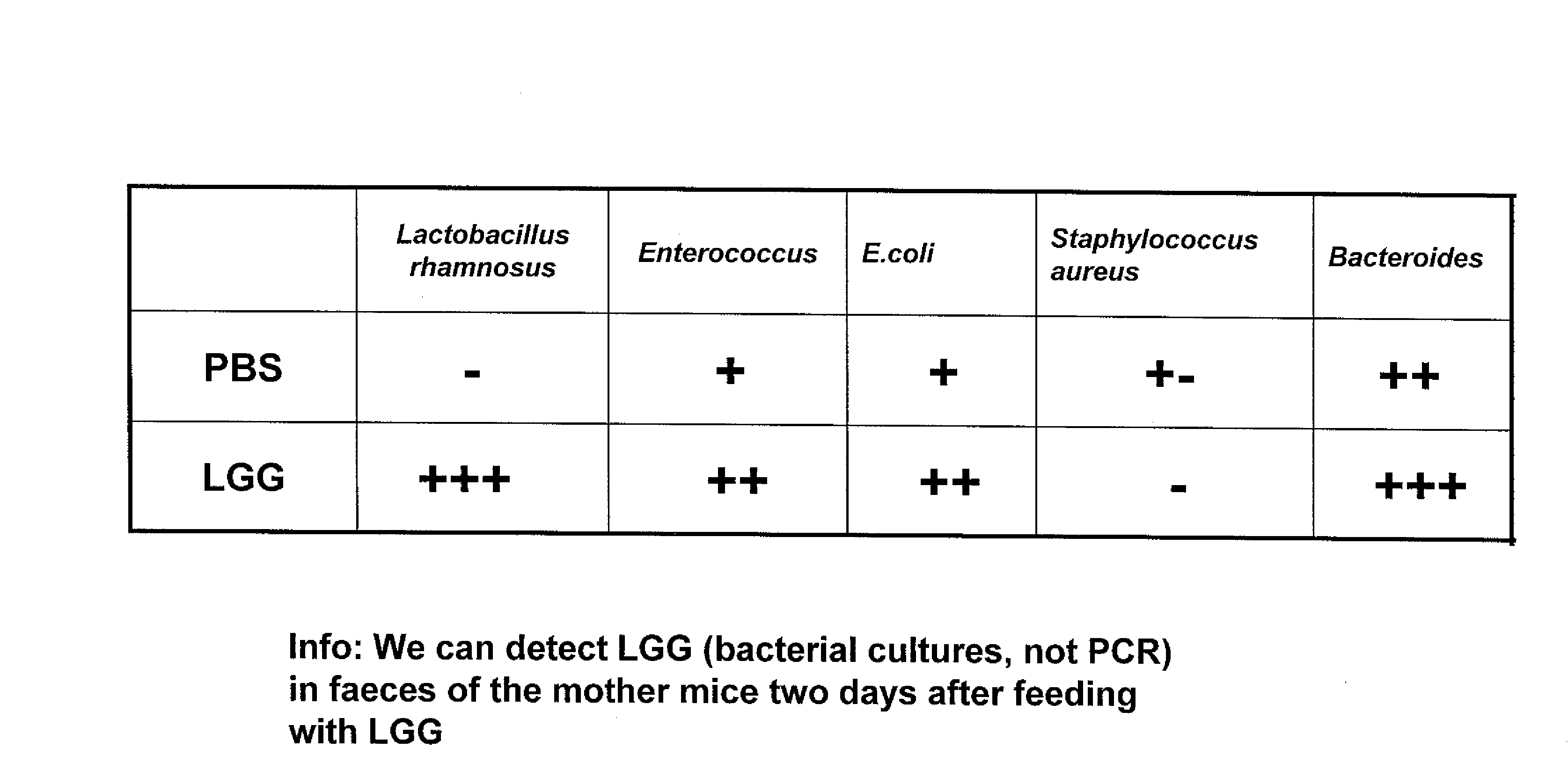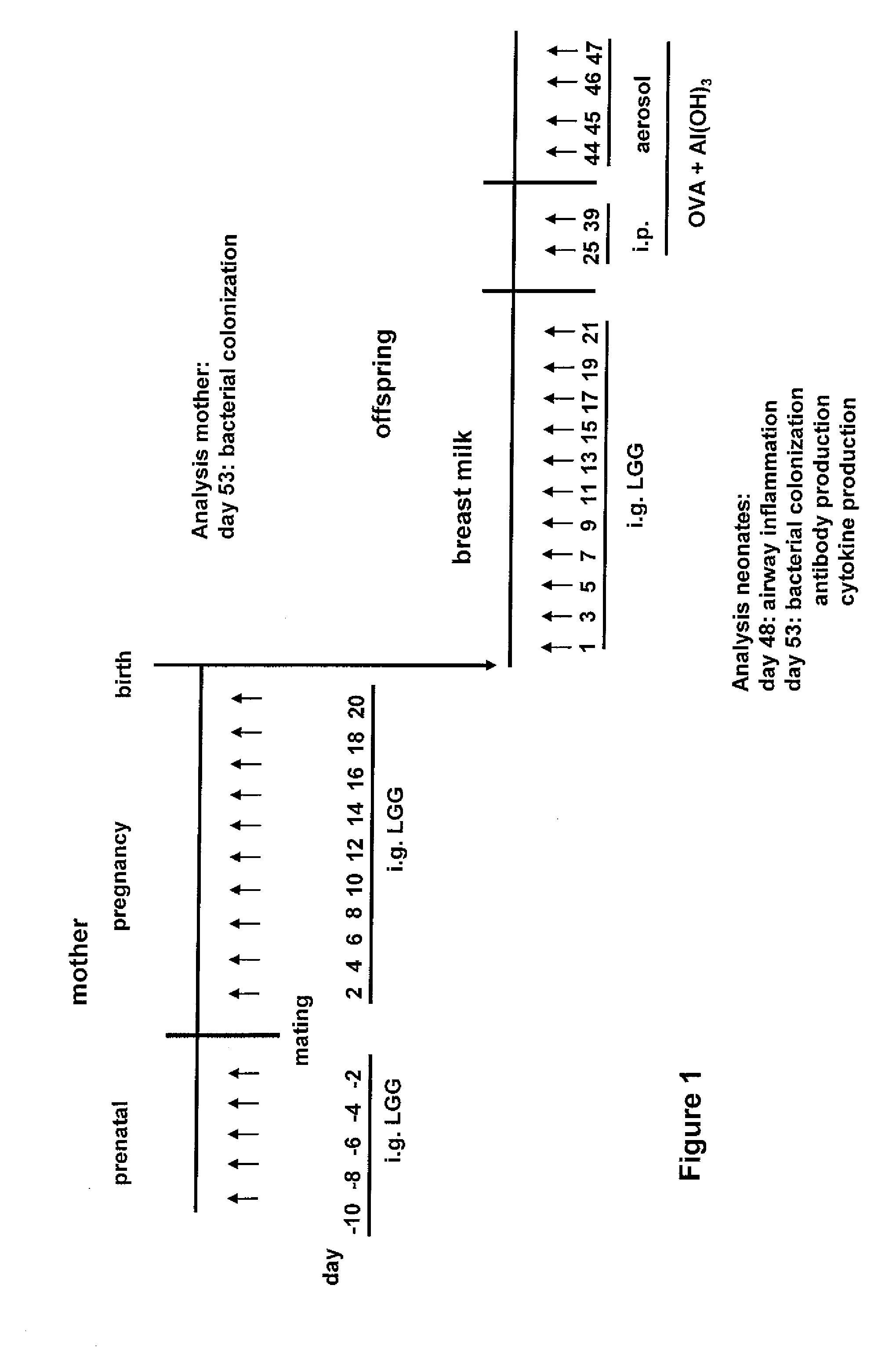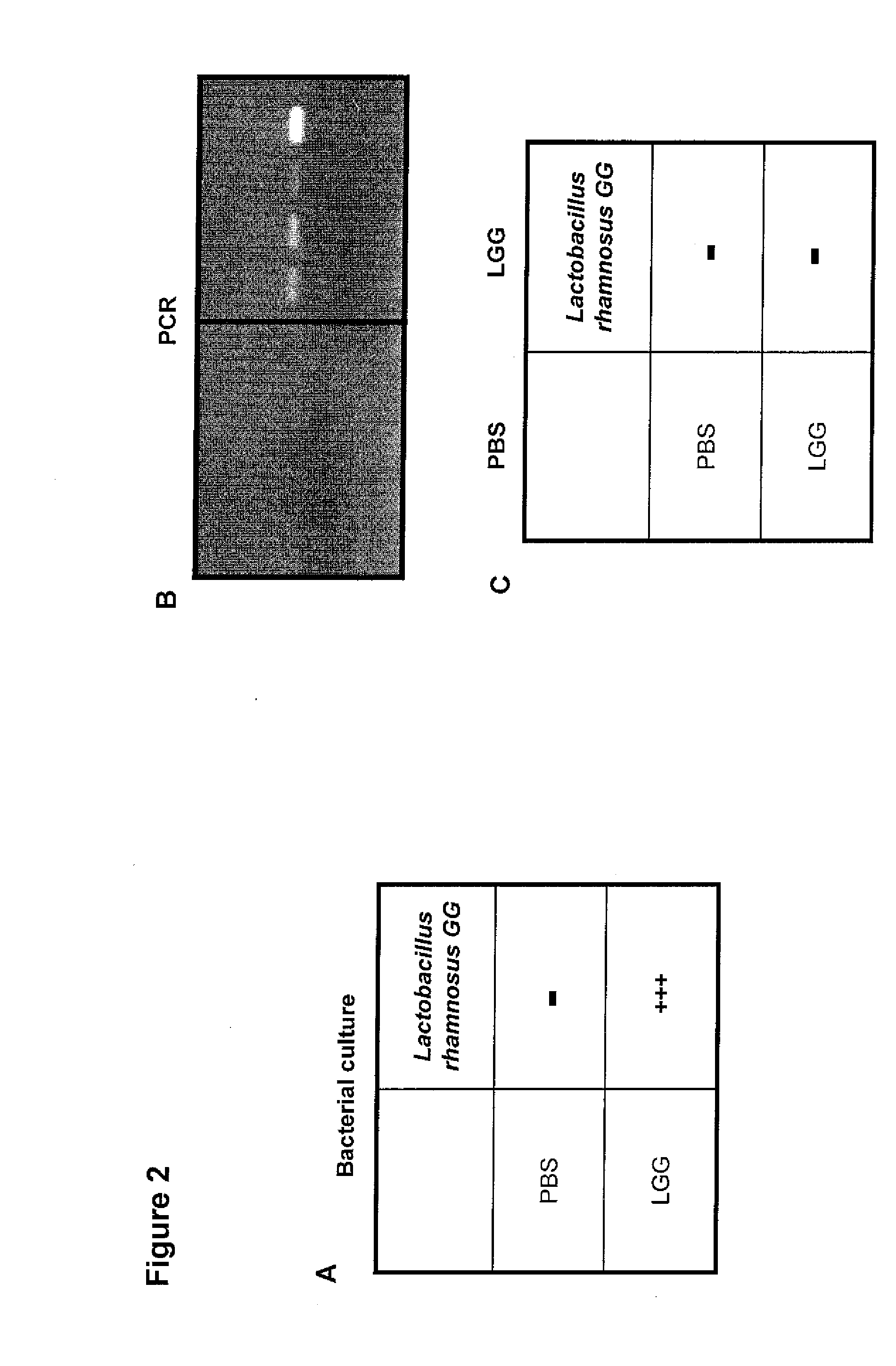Method for preventing or treating the development of respiratory allergies
a technology for respiratory allergies and treatment methods, applied in the field of preventing or treating the development of respiratory allergies, can solve the problems of allergic attack, itchy nose, throat and eyes, excessive sneezing, etc., and achieve the effects of preventing or treating respiratory allergies, and reducing or preventing allergy-induced inflammation
- Summary
- Abstract
- Description
- Claims
- Application Information
AI Technical Summary
Benefits of technology
Problems solved by technology
Method used
Image
Examples
example 1
[0072] This example describes the materials and methods necessary to show the effect of the prenatal administration of LGG on the development of respiratory allergies and inflammation in the lung and airways. Female bag albino, substrain c (BALB / c) mice aged 6-8 weeks were obtained from Harlaan Hinkelmann (Hannover, Germany). They were maintained on an Ovalbumin (OVA)-free diet. All of the experimental procedures were approved by the animal ethics committee.
Prenatal Lactobacillus rhamnosus GG (LGG)-Exposure
[0073] Female BALB / c mice received 5 intragastric (i.g.) applications of 108 colony forming units (cfu) freeze-dried LGG in a volume of 200 μl (reconstituted in phosphate-buffered saline (PBS)) on days −10, −8, −6, −4 and −2 prior to mating. After mating and during the gestation and lactation period, mice of all groups were treated intragastrically with 108 cfu freeze-dried LGG in a volume of 200 μl every second day. Age matched, sham-exposed control animals received PBS instea...
example 2
[0082] This example illustrates the presence of LGG in the feces of the treated mice. The presence of LGG was assessed in fecal samples from LGG-treated mice versus mice which received PBS only. After microbial culturing, LGG was present in fecal samples from LGG treated mice whereas no LGG could be detected in PBS treated mice (FIG. 2A). To further confirm that the detected LGG is indeed identical with the LGG supplementation, DNA was prepared from fecal samples and amplified with LGG-PCR-specific primers. As shown in FIG. 1B, LGG specific PCR products could be detected in the samples from LGG treated mice whereas no LGG specific PCR products were detectable in samples from PBS treated mice (FIG. 2B). This result indicates that prenatal and early postnatal treatment of mice resulted in colonization of the gut and LGG is still detectable at least three weeks after the last LGG supplementation.
[0083] To assess whether maternal LGG treatment resulted in long-term (beyond 3 weeks afte...
example 3
[0085] This example illustrates the effect of LGG on the production of serum allergen-specific antibodies in allergic subjects. It was further studied whether prenatal and early postnatal LGG-supplementation suppresses the development of an allergic phenotype later in life. Therefore, allergen-specific antibody production was assessed in the mice offspring after intra-peritonal sensitization to OVA following OVA-allergen aerosol exposure. As shown in FIGS. 4A and 4B, maternal LGG supplementation hinders the development of an allergen specific antibody response as indicated by a significant reduced production of anti-OVA IgG1 in prenatal and early postnatal exposed LGG mice compared to PBS controls (FIG. 4A, B). The murine IgG1 antibody subclass is the effector molecule in allergic manifestations such as positive skin prick tests and development of airway inflammation. Regarding this allergic effector function, the murine IgG1 antibody subclass equals the human IgE antibody subclass....
PUM
 Login to View More
Login to View More Abstract
Description
Claims
Application Information
 Login to View More
Login to View More - R&D
- Intellectual Property
- Life Sciences
- Materials
- Tech Scout
- Unparalleled Data Quality
- Higher Quality Content
- 60% Fewer Hallucinations
Browse by: Latest US Patents, China's latest patents, Technical Efficacy Thesaurus, Application Domain, Technology Topic, Popular Technical Reports.
© 2025 PatSnap. All rights reserved.Legal|Privacy policy|Modern Slavery Act Transparency Statement|Sitemap|About US| Contact US: help@patsnap.com



